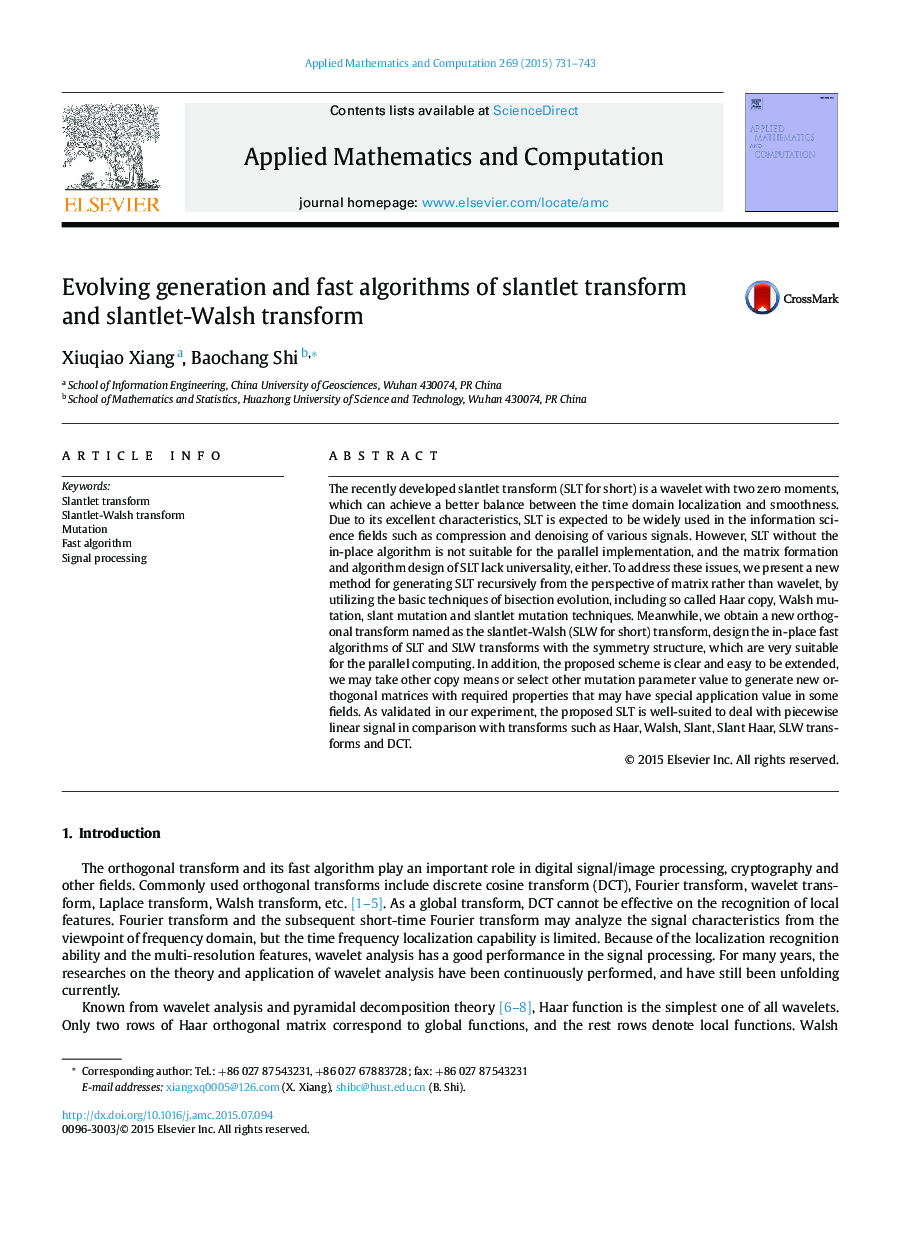| Article ID | Journal | Published Year | Pages | File Type |
|---|---|---|---|---|
| 6420188 | Applied Mathematics and Computation | 2015 | 13 Pages |
The recently developed slantlet transform (SLT for short) is a wavelet with two zero moments, which can achieve a better balance between the time domain localization and smoothness. Due to its excellent characteristics, SLT is expected to be widely used in the information science fields such as compression and denoising of various signals. However, SLT without the in-place algorithm is not suitable for the parallel implementation, and the matrix formation and algorithm design of SLT lack universality, either. To address these issues, we present a new method for generating SLT recursively from the perspective of matrix rather than wavelet, by utilizing the basic techniques of bisection evolution, including so called Haar copy, Walsh mutation, slant mutation and slantlet mutation techniques. Meanwhile, we obtain a new orthogonal transform named as the slantlet-Walsh (SLW for short) transform, design the in-place fast algorithms of SLT and SLW transforms with the symmetry structure, which are very suitable for the parallel computing. In addition, the proposed scheme is clear and easy to be extended, we may take other copy means or select other mutation parameter value to generate new orthogonal matrices with required properties that may have special application value in some fields. As validated in our experiment, the proposed SLT is well-suited to deal with piecewise linear signal in comparison with transforms such as Haar, Walsh, Slant, Slant Haar, SLW transforms and DCT.
